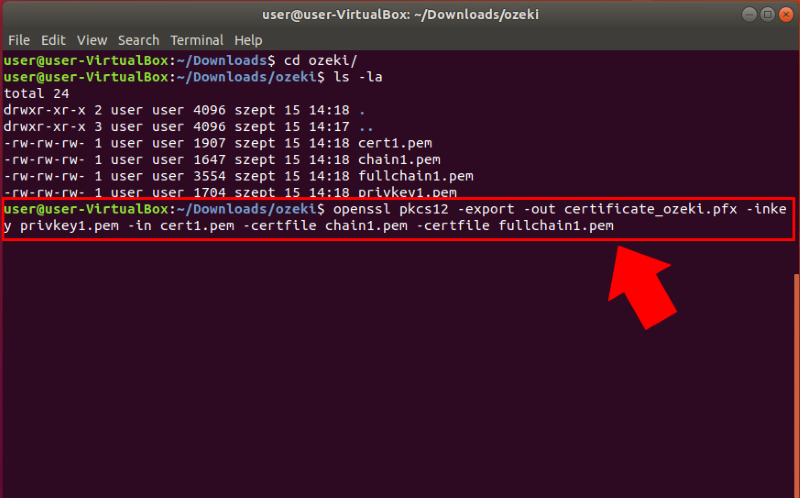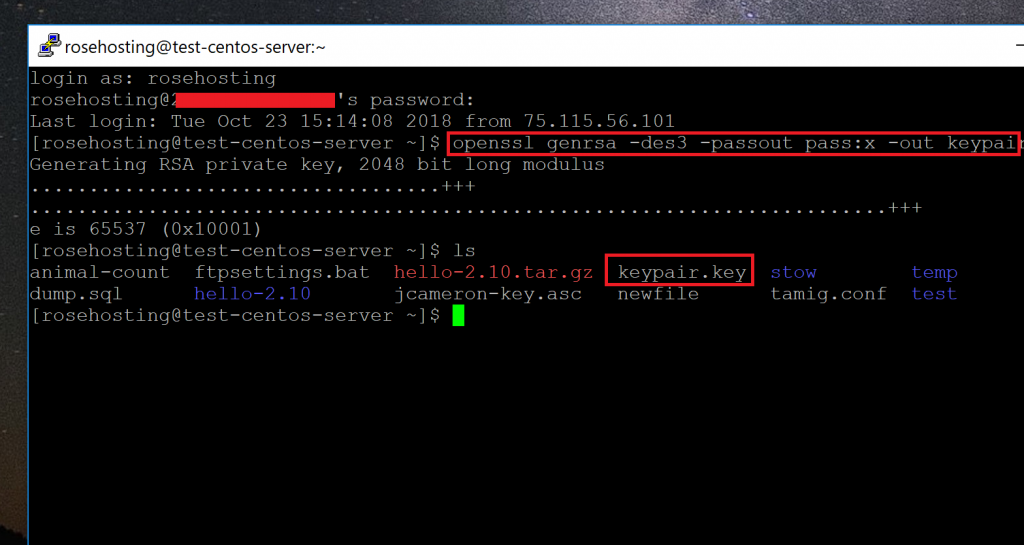

Once you run the command you should see the new pfx file in your directory folder. pfx file that is generated from the command. Change privatekey.key with the name of your private key and change the name of the certificate.pfx with the name you want for the. Otherwise, you can find compiled binaries directly from the OpenSSL Website or consult your Operating Systems package management feature. Openssl pkcs12 -export -in certificate.cer -inkey privatekey.key -out certificate.pfxīe sure to replace certificate.cer with the name of your. For example:Ĭd /path/to/your/directory/with/the/crt/and/private/key Using a Terminal application, make sure you change to the directory containing both your. cer certificate file you downloaded from your certificate authority (Digicert, Verisign, GeoCerts) as well as the private key you used to generate the CSR on your server. OpenSSL is a popular command line tool to help you generate certificates for TLS protocols.įor this workflow you will need the. If you are just starting generating your certificate, please refer to the article on how to generate a CSR with OpenSSL.

Private key is encoded in PKCS#1 format.In this post we will look at how to convert cer to pfx in OpenSSL. Public certificate and associated private key are saved in the same file. In this example, ssl.pfx file is converted to PEM format. Similar to previous example which can be used in quiet mode. Example 2 PS C:\> Convert-PfxToPem -InputPath c:\test\ssl.pfx -Password (ConvertTo-SecureString -AsPlainText -Force) -OutputPath c:\test\ssl.pem -OutputType Pkcs1 PS C:\> Convert-PfxToPem -InputPath c:\test\ssl.pfx -Password $pass -OutputPath c:\test\ssl.pem
#Openssl pfx to pem password
509Certificates.X509Certificate2 Outputsīlog: Examples Example 1 PS C:\> $pass = Read-Host "Enter password for PFX file:" -AsSecureString WarningAction, WarningVariable, OutBuffer, PipelineVariable and OutVariable.įor more information, see about_CommonParameters ( ). This cmdlet supports the common parameters: Verbose, Debug,ĮrrorAction, ErrorVariable, InformationAction, InformationVariable, Required?Īttempts to build the certificate chain and exports them to PEM file along with private key. Specifies an existing X509Certificate2 object that contains associated exportable private key.

Possible values are either: 'Pkcs1' or 'Pkcs8' (default). Specifies the format for exported private key. This parameter is mandatory when using InputFile parameter. Specifies the password to open PKCS#12/PFX file. Password parameter is required when using this parameter. Specifies the path to a PKCS#12/PFX file. openssl x509 -outform der -in certificate.pem -out r.

Converting PEM encoded certificate to DER. Remember, it’s important you keep your Private Key secured be sure to limit who and what has access to these keys.
#Openssl pfx to pem windows
For Windows a Win32 OpenSSL installer is available.
#Openssl pfx to pem mac os x
Note: for this command to succeed, the private key must be marked as exportable in plain text mode. Mac OS X also ships with OpenSSL pre-installed. The command converts CryptoAPI X.509 certificate and private key to a X.509 public certificate and associated either PKCS#1 or PKCS#8 private key. Syntax Convert-PfxToPem ] Ĭonverts PKCS#12/PFX file or X509Certificate2 object to OpenSSL-compatible PEM (Privacy Enhanced Mail) file. Converts PKCS#12/PFX file or X509Certificate2 object to OpenSSL-compatible PEM (Privacy Enhanced Mail) file.


 0 kommentar(er)
0 kommentar(er)
